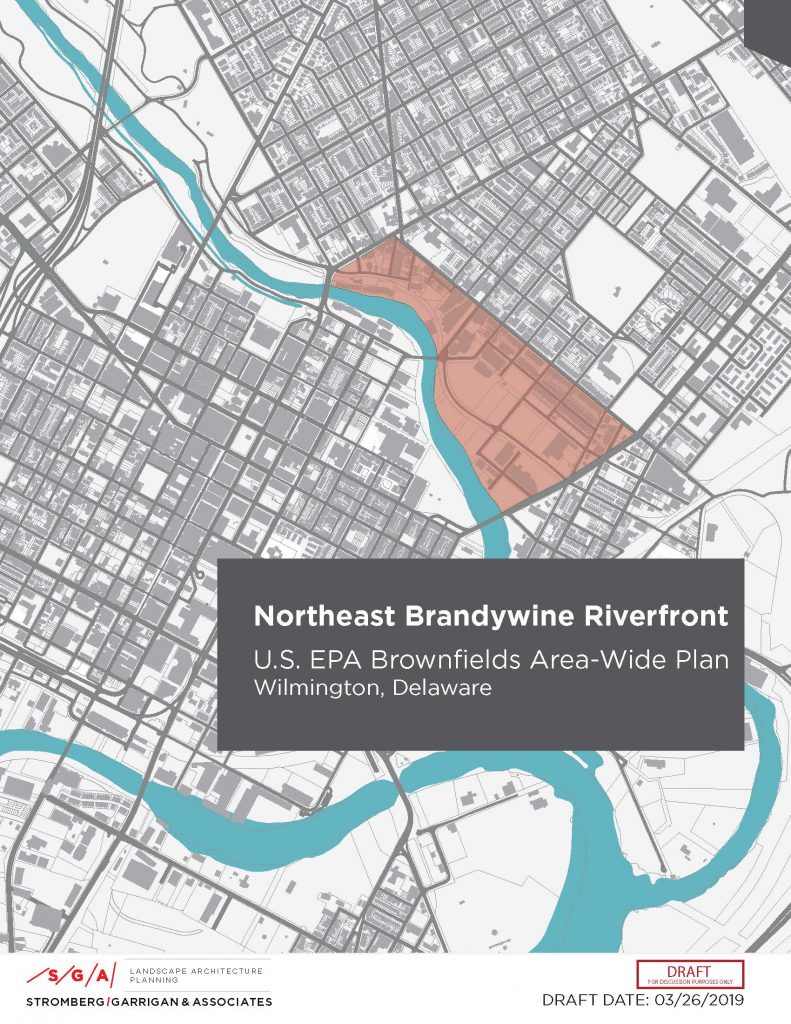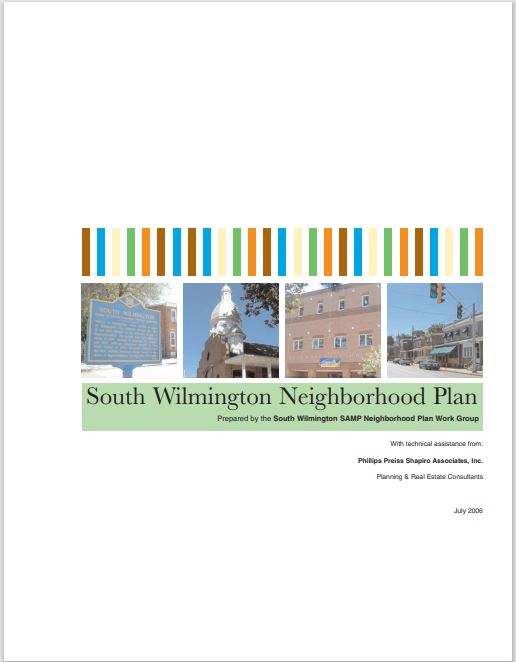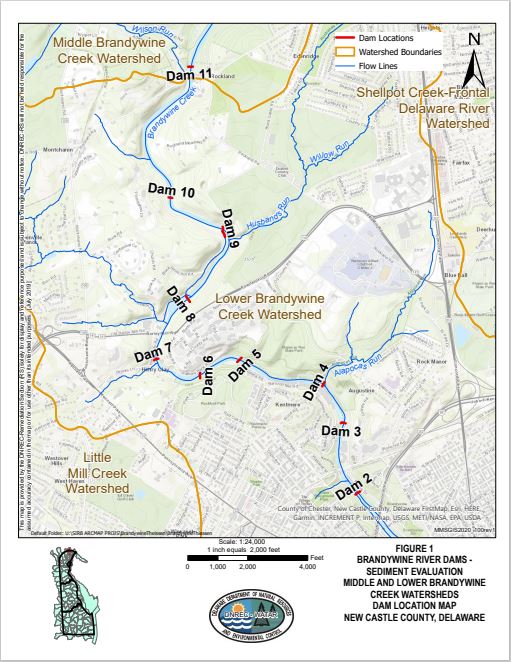The Christina-Brandywine River Remediation Restoration Resilience (CBR4) project area has seen more than two decades of planning work, to understand the needs of the community, and scientific research, to understand contamination sources.
As a course of general business, several DNREC programs have contributed to the trend of improvement within the study area.
Contaminated site cleanup has occurred since the 1990s within the Christina Basin, and throughout the state, through various programs administered by the DNREC Division of Waste and Hazardous Substances, including the Voluntary Cleanup Program and Brownfield Program.
Contaminants from industrial discharges and stormwater discharges are being monitored by DNREC permitting programs in compliance with Delaware River Basin Commission (DRBC) mandated Pollution Minimization Plans.
Monitoring of fish tissue quality has occurred within the project area since the late 1990s and early 2000s by the DNREC Division of Watershed Stewardship, which has resulted in the establishment, and relaxation, of fish consumption advisories.
Data indicates that contaminant concentrations in fish are trending downward because of the basin-wide efforts to eliminate sources of contamination.

In 2018 the U.S. EPA awarded the city of Wilmington a grant to develop a Brownfields Area-Wide Plan and implementation strategy for a 100-acre area along the Brandywine Creek in Northeast Wilmington that contains multiple brownfield sites.
The plan, completed in 2019, built on a variety of previous planning efforts in the area and specifically sought to “validate previous recommendations, refine proposals and target implementation strategies.”
The resulting plan includes implementable strategies that incorporate the needs of residents, property owners and the city of Wilmington.

In 2006 DNREC’s Delaware Coastal Programs leveraged funding from the National Oceanic and Atmospheric Agency (NOAA) to assist the city of Wilmington, the Wilmington Area Planning Council and Wilmington Housing Authority to engage members of the Southbridge community to complete the SAMP for South Wilmington.
The SAMP provides a long-term vision and guiding document for the community and includes both small and large projects to improve residents’ quality of life.
In 2008 the SAMP was adopted as part of the South Wilmington Urban Renewal Plan, which promotes “environmental, economical and socially sustainable practices in the ongoing development of South Wilmington.”
One of the major projects identified in the SAMP is the South Wilmington Wetland Park. Thanks to funding support from DNREC, NFWF and NOAA park construction began in 2018 and is nearing completion.
The park is scheduled to open in summer of 2021 and will provide stormwater management, enhance and restore wetlands and create new recreational opportunities to area residents.

DNREC’s WATAR team evaluated sediment quality behind eight dams in the Brandywine River in 2020.
The purpose of the study was to understand potential adverse human health and/or ecological effects from the release of sediments during dam modification/removal, or from catastrophic failure of any of the aged dams during a major storm/high flow event.
Understanding potential impacts from the release of trapped sediments will allow DNREC to effectively influence proposed construction projects in the river and to provide regulatory protection to downstream drinking water sources and existing fish habitat.
To map and characterize sediments (soils) and help target future cleanup of contaminants including PCBs in the river, the Christina Conservancy funded a survey of the river bottom in 2018.
This survey used geophysical remote sensing and bottom/sub-bottom sampling to identify bottom substrates (coarse sand, fine sand, silt, etc.).
The results of this work are crucial for the success of the CBR4 initiative, specifically for the mapping of contaminants and for assessing potential remedial options.
DNREC’s WATAR team sampled the Christina River Basin in 2015 providing a comprehensive look at toxic contaminants in sediment, surface water and fish tissue to assess current ecosystem health and aids in the identification of potential contaminant source areas that will need further attention.
Several DNREC programs participated in this 3-week sampling event. The study results provided the WATAR team with a clear picture of where to focus future source trackback and remediation efforts, but also showed that past efforts made by multiple DNREC programs over time are having a positive impact.
Related Topics: brandywine, cbr4, christina, cleanup, planning, remediation, research, resilience, restoration, waste and hazardous substances, watar